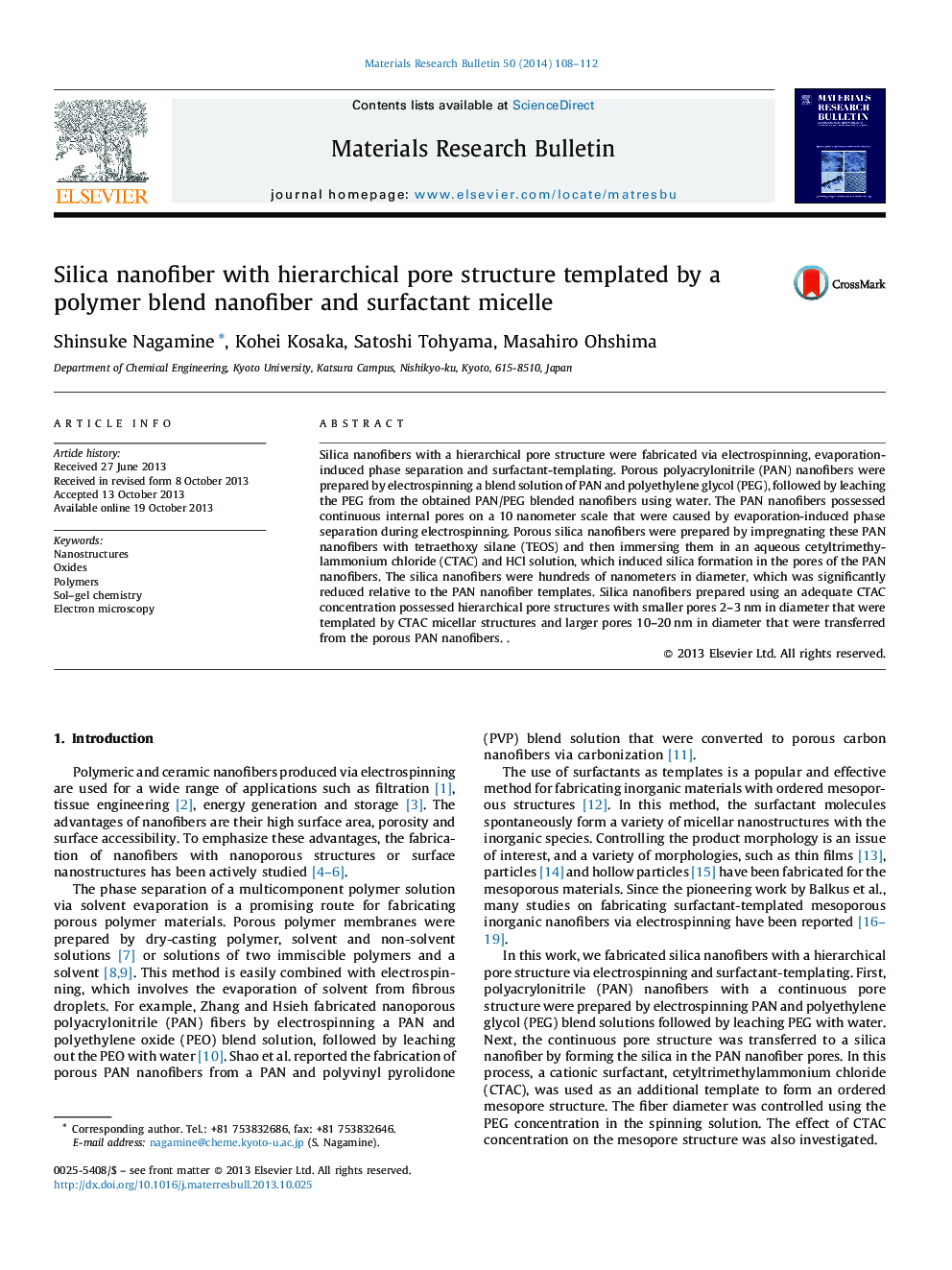| Article ID | Journal | Published Year | Pages | File Type |
|---|---|---|---|---|
| 1488496 | Materials Research Bulletin | 2014 | 5 Pages |
•Porous PAN nanofibers via electrospinning a PAN/PEG blend solution.•Silica nanofibers templated by PAN nanofibers and CTAC micelles.•Hierarchical pore structure controlled by CTAC concentration.
Silica nanofibers with a hierarchical pore structure were fabricated via electrospinning, evaporation-induced phase separation and surfactant-templating. Porous polyacrylonitrile (PAN) nanofibers were prepared by electrospinning a blend solution of PAN and polyethylene glycol (PEG), followed by leaching the PEG from the obtained PAN/PEG blended nanofibers using water. The PAN nanofibers possessed continuous internal pores on a 10 nanometer scale that were caused by evaporation-induced phase separation during electrospinning. Porous silica nanofibers were prepared by impregnating these PAN nanofibers with tetraethoxy silane (TEOS) and then immersing them in an aqueous cetyltrimethylammonium chloride (CTAC) and HCl solution, which induced silica formation in the pores of the PAN nanofibers. The silica nanofibers were hundreds of nanometers in diameter, which was significantly reduced relative to the PAN nanofiber templates. Silica nanofibers prepared using an adequate CTAC concentration possessed hierarchical pore structures with smaller pores 2–3 nm in diameter that were templated by CTAC micellar structures and larger pores 10–20 nm in diameter that were transferred from the porous PAN nanofibers. .
Graphical abstractFigure optionsDownload full-size imageDownload as PowerPoint slide
